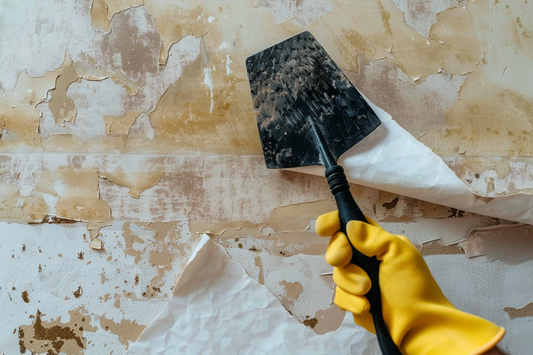Introduction
Removing wallpaper is a task that many of us may approach with hesitation, especially without the help of a steam stripper. However, with the right knowledge and tools, this daunting task can be simplified. This guide will walk you through various methods of removing wallpaper efficiently and safely, ensuring a smooth surface ready for your next decorating project.
Understanding Wallpaper Types
Strippable Wallpapers
Modern "paste-the-wall" wallpapers are often designed to be easily strippable, allowing them to be peeled off in large sheets. This type of wallpaper is ideal for those looking for a hassle-free removal.
Peelable Wallpapers
Peelable wallpapers allow you to remove the top layer while leaving the backing on the wall, which will also need to be removed separately. This type might require a bit more effort compared to strippable wallpapers.
Wet Removable Wallpapers
These wallpapers require a wet removal process, typically involving a solution or steam to loosen the adhesive. This method can be more labor-intensive but is necessary for wallpapers that are firmly adhered to the wall.
Preparing for Wallpaper Removal
Safety is paramount when preparing to remove wallpaper. Begin by turning off electrical circuits and covering outlets to prevent water from entering. Ensure you have all necessary tools at hand, including a bucket, sponge, scraper, and possibly a scorer or specific wallpaper removal solutions.
Methods for Removing Wallpaper
Soaking and Scraping
Equipment Needed
Prepare a bucket of hot water mixed with a mild detergent. A sponge or cloth will serve to apply the solution, and a standard wallpaper scraper will be used for peeling the wallpaper.
Step-by-Step Process
Apply the water solution with a sponge, working in manageable sections. Allow the solution to soak into the wallpaper before gently scraping it away from the wall.
Using a Long-Handled Scraper
A long-handled scraper provides additional leverage, making it easier to remove wallpaper, especially from hard-to-reach areas. This tool can significantly reduce the strain on your back and arms.
Employing a Wallpaper Scorer
For wallpapers that are tough to remove, using a wallpaper scorer can help by puncturing the paper and allowing the soaking solution to penetrate more effectively. This facilitates easier scraping and removal.
Applying a Wallpaper Removal Solution
If you're dealing with wallpaper applied with strong adhesive, a commercial wallpaper remover solution may be necessary. These solutions are designed to break down the adhesive quickly, making the removal process smoother.
Alternative Methods
In tough spots, a hairdryer can be used to gently heat and loosen the wallpaper adhesive, allowing for easier scraping of edges and corners.
Post-Removal Wall Preparation
For Repainting
Once the wallpaper is removed, sanding the wall lightly to remove any residue and then sealing it ensures a smooth base for painting. A sealer will lock in any remaining adhesive residues, preventing them from affecting your new paint.
For Re-Wallpapering
If you plan to re-wallpaper the surface, it's crucial to size and smooth the wall thoroughly. Consider using a lining paper if the wall's condition is less than ideal.
Choosing New Wallpaper
Consider the room's functionality and moisture exposure when selecting new wallpaper. Removable self-adhesive wallpapers offer a practical solution for most spaces, while heavier, durable papers might be better suited for high-traffic areas.
Conclusion
Removing wallpaper without a steam stripper is entirely feasible with the right approach and tools. Whether you're preparing for a fresh coat of paint or a new wallpaper installation, following these steps will ensure that your walls are perfectly prepped for whatever comes next.
FAQs
-
How to handle textured wallpapers?
Textured wallpapers often require a more thorough soaking to penetrate through the layers, making a scoring tool particularly useful. -
What to do if wallpaper residue remains?
If residues persist, a second application of wallpaper remover solution followed by scraping should help. -
How long should I wait before redecorating?
Allow the wall to dry completely, which might take 24-48 hours, before starting any redecoration. -
Can I wallpaper over old adhesive?
It's best to remove all old adhesives and prep the wall thoroughly to avoid issues with adhesion and surface smoothness. -
Tips for choosing wallpaper for different room types?
Choose vinyl wallpapers for moisture-prone areas like bathrooms and kitchens, while paper-based wallpapers can be ideal for living areas and bedrooms where moisture is less of a concern.

